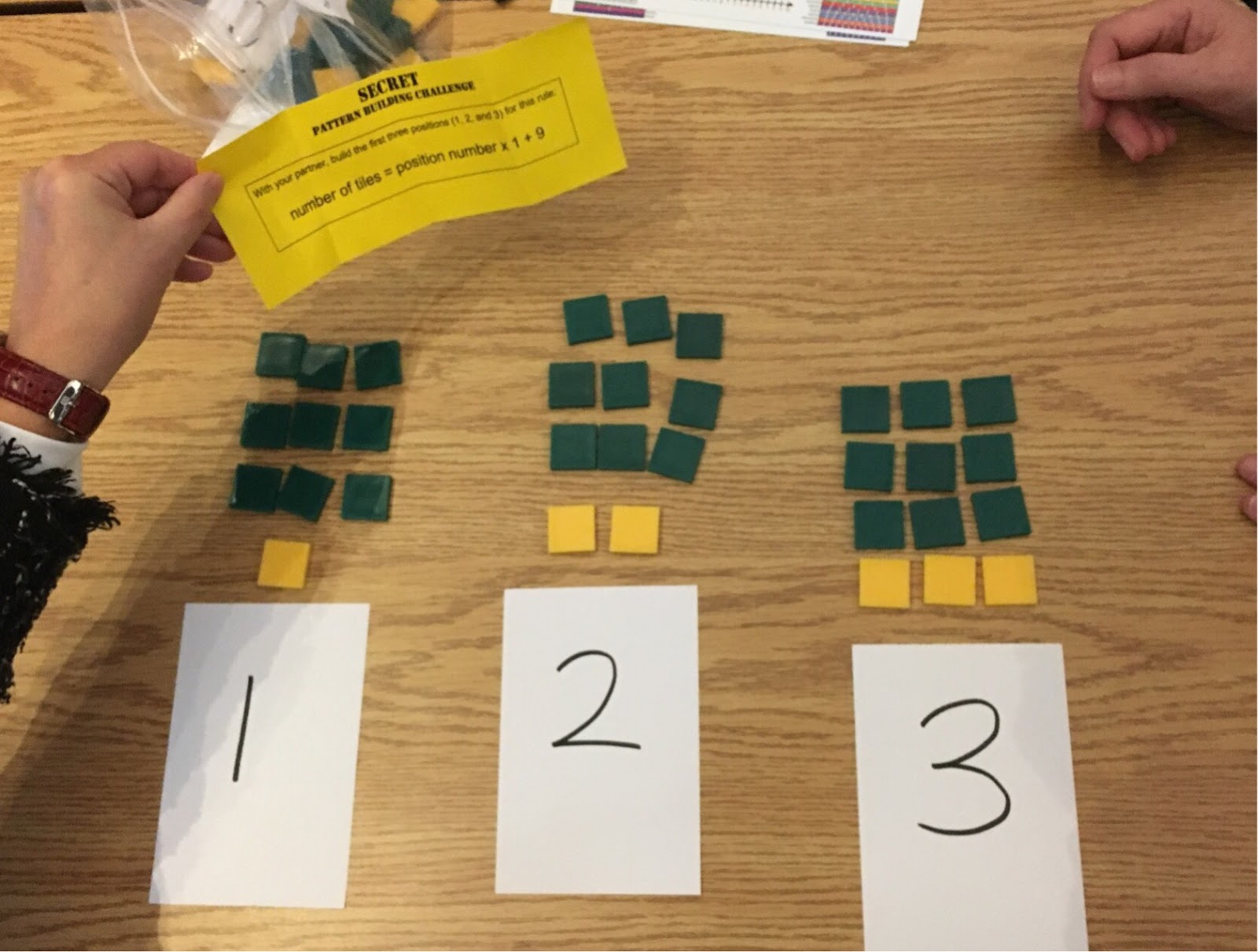
For the past several weeks, our math team has been facilitating professional development sessions relating to the work of Dr. Ruth Beatty and Dr. Cathy Bruce, co-authors of From Patterns to Algebra, a truly amazing resource that showcases the progression of conceptual understanding of algebraic concepts.
We are extremely lucky to have Dr. Beatty so close to us, as she's literally just up the road at the Lakehead University Orillia Campus, and she's been kind enough to agree to work with our board to support our 7-10 cross panel inquiry work.

One of the most beautiful aspects of Beatty and Bruce's work, is how algebraic concepts are made so clear for students, through concrete representations using colour tiles. When students have the opportunity to mess around with algebraic concepts early in their elementary education, their transition to secondary school and formal algebraic instruction becomes much more fluid, as they already have all of this beautifully pre-constructed knowledge and understanding.

One of the things that From Patterns to Algebra explores is how very young students, even in Kindergarten, can begin to think about the relationship between the position number and the number of tiles, and use this understanding to make near, far, and very far predictions about a pattern. As an educator, it really is amazing to see that conceptual understanding unfold before your eyes.

One of my favourite activities that we've been exploring in our professional development sessions is the Secret Pattern Building Challenge, where students work in pairs to create the first three positions (or terms) of a given linear growing pattern using colour tiles.
 |
| An example of a Secret Pattern Building Challenge card |
As a scaffold, students may use two different coloured tiles (one to represent the constant and the other to represent the multiplier), but as they develop their understanding, this scaffold may be removed, so only one colour tile is used. Once students have created the first three positions, they turn over their Secret Pattern Building Challenge card, and begin a gallery walk to see if they can guess the rules of the patterns created by their peers. This is a fun and engaging way to help students see concrete representations of algebraic expressions, while giving them the opportunity to get creative with their pattern in the process. Students may also begin to move away from simple array structures with the tiles, and start exploring other representations, including tile location and orientation.
 |
| Building the first three positions of the pattern |
I've created a Secret Pattern Building Challenge Card google doc that can be found here, so you can try this activity out in your own classroom.
Of course, as previously mentioned, the beautiful thing about Beatty and Bruce's work is how well each of the concepts explored are scaffolded in a way that allows students to build on prior knowledge in a meaningful way. It really is powerful stuff, as it allows students to move away from recursive thinking to multiplicative thinking.
If you haven't had a chance to explore From Patterns to Algebra, I highly recommend finding yourself a copy. If you're an SCDSB teacher, I can guarantee there is at least one copy in your building! Otherwise, here's a link.
If you get a chance to try out some of the activities and document the experience, I'd love to hear about it!